
What's In Your Tap Water?
Last Updated: Feb 26, 2025Whether we want to admit it or not, most people who have access to drinking water take it for granted. It just magically drips from the tap, infinitely, without us ever questioning. Whether you are concerned with lead, chlorine, bacteria, nitrates, or something altogether different, two simple questions can provide you with the answer you are looking for:
- Where does your water come from?
- What's in your tap water?
Chances are you might not be able to answer either - but if you can, do you still drink your tap water as is? Being aware of your water source and its content is crucial for households who take their health and their family and friends' health to heart.
Table of Contents
- Where Does Tap Water Come From?
- What Is in Our Tap Water?
- What Is Added to Tap Water?
- Municipal Water Quality Testing
- Rural Water Quality
- What are Total Dissolved Solids (TDS)?
- Is Your Tap Water Safe To Drink?
- Home Tap Water Filtration
Where Does Tap Water Come From?
One of the most troublesome aspects of the water we use in our homes is that most people have no idea where their water comes from. We take for granted that when we turn on our kitchen faucet, abundant water will pour forth. We rarely stop to think about where that water comes from.
In the Western part of the United States, nearly 40 million people across seven states get their water from the Colorado River. Regrettably, few people think about the collective responsibility of maintaining that water source.
In other parts of the country, such as Texas, groundwater aquifers are the most commonly tapped household water sources. Unfortunately, much of that water is brackish or salty and needs to be heavily treated to be potable. In the Midwest, aquifers are also the most common water source in areas not near rivers. Cities like Des Moines, Iowa, are forced to treat their water for the high nitrates common due to agricultural runoff. If left untreated or undertreated, nitrates in drinking water can cause the "blue baby" disease, where infants are left short of breath due to contaminants in water.
The EPA has a helpful interactive map where you might be able to discover the source of the tap water that flows into your home.

In total, over 77 million Americans lived in places where the water systems were either violating some regulation or were not studied or monitored according to federal regulations. So, millions of households might not have a clear picture of what could be in the tap water we use to drink, bathe, and cook with daily.
The recent Flint Water Crisis brought to light an issue that was lurking underneath the surface for decades. Our aging national pipe system was found to be leaching lead and other dangerous chemicals and heavy metals into the drinking water of thousands of households. What is more worrisome is that the water crisis in Flint was not an isolated issue. One study finds that over 5,000 municipal water systems are also leaching lead into the drinking water delivered to homes. This includes major cities such as Milwaukee, Baltimore, and Philadelphia.
What Is in Our Tap Water?
While most would think that water is just two hydrogen molecules and one oxygen molecule, most tap water includes various substances. The Water Quality Association reports that lead is not the only contaminant commonly found in tap water. Instead, the following chemicals and pathogens are also routinely detected in US water systems:
- Aluminum
- Ammonia
- Arsenic
- Barium
- Cadmium
- Chloramine
- Chromium
- Copper
- Fluoride
- Bacteria & Viruses
- Lead
- Nitrates/Nitrites
- Mercury
- Perchlorate
- Radium
- Selenium
- Silver
- Uranium
People living in agricultural areas or near industrial centers have a much higher probability of compromised water purity due to runoff and filtration. As the fracking industry continues to expand, the EPA admitted that this industry is also responsible for widespread groundwater contamination. \Methanol is one of the most dangerous water contaminants related to the fracking industry. The fracking liquid used to break open the shale rock often contains this chemical that can lead to permanent nerve damage and even blindness in humans.
As we mentioned above, industrial agriculture is also a significant contaminant of groundwater. Large scale feedlots and concentrated animal feeding operations (CAFOs) or concentrate vast amounts of animal feces, fertilizers, ammonia, and pesticides can run off into water sources. Animal feedlots are responsible for up to 40% of all antibiotics used in the United States. Traces of these antibiotics are released in animal manure, which can then further contaminate water sources.
What Is Added to Tap Water?
Due to the high levels of contaminants in water from the source and old piping systems, most municipal water systems have an intensive purification process. However, most of these plants also add a wide variety of additives to your water. Fluoride is one of the most common additives to tap water. While this improves dental health, not everyone is comfortable having this added to their municipal water system. Tap water also routinely includes chlorine to kill off pathogens. However, studies have shown that this strong-smelling (and bad tasting) chemical increases asthma risk in children and might cause bladder cancer in men. Even if your water is not bright neon green, it could contain radioactive elements such as uranium and radon gas that occur naturally in groundwater. Many rural areas might not have adequate treatment systems to get rid of these radioactive elements.

Municipal Water Quality Testing
The EPA's Home Drinking Water Testing fact sheet asks whether the water source is public or private. The fact sheet says that most US people live in an area that provides an annual water quality report, called a Consumer Confidence Report (CCR). Simply put, a CCR tells the consumer where their water comes from and what's in it. Mandated by the government since 1998, the CCR must be shared with all homeowners in their July water bills. They indicate that your water company should notify you of issues that could cause illness or other problems.
Phew, right? No need to test your water if you pay a water bill. But what about Flint?
The Lesson of Flint, Michigan
Water in Flint, Michigan, was publicly provided and, therefore, was subject to CCR regulations. The problem arose when Genesee County decided to reduce the cost of supplying water to Flint residents by switching from the Detroit Water and Sewerage Department to the Karegnondi Water Authority. As of April 2013, the Flint River, not Lake Huron, provided Flint's water, but it was still a community water system and subject to mandatory testing and reporting. So what went wrong?
Periodic evidence of bacterial contamination of Flint River water forced authorities to increase the water's chlorination significantly. However, they neglected to add anti-corrosive chemicals when they did so, allowing increased chlorine levels to corrode the old lead piping. As a result, lead leached from the pipes into the drinking water, resulting in highly elevated lead levels. Thousands of Flint children were exposed, over many years, to lead-contaminated drinking water. According to the Mayo Clinic, exposure causes health problems like developmental delay, learning difficulties, hearing loss, seizures, and more. Other contaminants to the water may have caused an outbreak of Legionnaire's Disease that killed 12 people.
It seems that some tests were carried out, and some people were notified of the results. However, vast numbers of people were unaware, for years, that the water they and their children consumed was toxic. In this case, the CCR failed to keep citizens safe. Some articles have suggested that publicizing results online regularly would allow more immediate and transparent reporting, but the solution is far from clear.

Rural Water Quality
People with non-community-based water supplies generally get their water from wells. The EPA's water safety guidelines state that these citizens are "solely responsible for their water's safety" and "should routinely test for several contaminants.
For private water supplies, the EPA recommends testing for the following on an annual basis:
- Coliform bacteria
- Total dissolved solids (TDS)
- pH
- Nitrates (including more frequent testing for nitrates, every six months, if a consumer is pregnant or a family has an infant)
The EPA recommends immediate testing if the water's smell or taste is odd or the water produces stains test for sulfate, chlorine, iron, and manganese. If there has been a local fuel or chemical leak, they recommend testing chemical contaminants and volatile organic compounds (VOCs). See the "When to Test Your Water" with headings "Conditions or Nearby Activities" and "Recommended Test" for additional guidelines.
These tests cannot be done at home with a few exceptions (including TDS and pH). Consumers can bring water samples to county health departments or a state-certified water testing lab. The EPA provides a number for finding such labs, but the cost of testing is variable, but it is not free in general.
What are Total Dissolved Solids (TDS)?
When water is tested for TDS, it is tested for the presence of total dissolved solids. This test checks to see if there is anything in the water other than pure H2O, the molecule itself. The substances that may be present as contaminants in water are many and varied. These can include salt, minerals, compounds, metals, chemicals dissolved in rainwater or pipes, agricultural runoff (including bacteria and viruses), phytoplankton, and remnants of pharmaceutical drugs. TDS is calculated by measuring the electrical conductivity of water on the premise that contaminants in water carry a positively or negatively charged ion and, therefore, will conduct electricity. Pure water has zero EC. Increased EC correlates with increasing TDS. The EPA has not set a mandatory TDS limit but suggests a maximum level of 500ppm. Inexpensive TDS meters are widely available.
Water Saving
Shop home improvement products that help save and conserve water.

Stiebel Eltron Accelera 300 E Heat Pump Water Heater
Stiebel Eltron
Out of Stock

Stiebel Eltron DHC-E 8/10-2 Plus Point-of-Use Electric Tankless Water Heater - 202145
Stiebel Eltron
In Stock

Stiebel Eltron Accelera 220 E Heat Pump Water Heater
Stiebel Eltron
In Stock
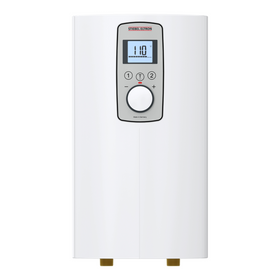
Stiebel Eltron DHC-E 3/3.5-1 Trend Point-of-Use Electric Tankless Water Heater - 200057
Stiebel Eltron
In Stock
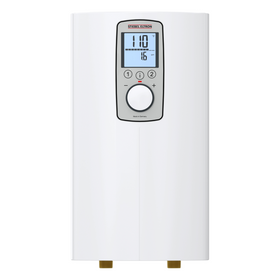
Stiebel Eltron DHC-E 12/15-2 Plus Point-of-Use Electric Tankless Water Heater - 200056
Stiebel Eltron
In Stock
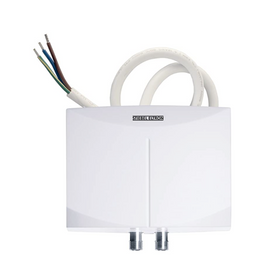
Stiebel Eltron Mini 2-1 Single Handwashing Sink Electric Tankless Water Heater
Stiebel Eltron
In Stock
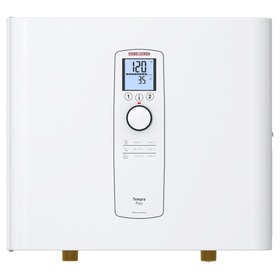
Stiebel Eltron Tempra 24 Whole House 24 kW 5 GPM Electric Tankless Water Heater
Stiebel Eltron
In Stock
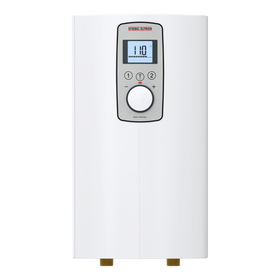
Stiebel Eltron DHC-E 8/10 - 2 Trend Point-of-Use Electric Tankless Water Heater - 200058
Stiebel Eltron
In Stock
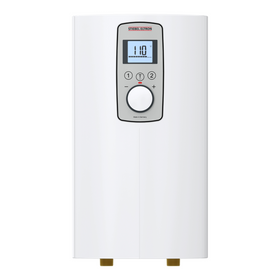
Stiebel Eltron DHC-E 4/6.2 - 2 Trend Point-of-Use Electric Tankless Water Heater - 200061
Stiebel Eltron
In Stock

Saniflo Sanibest Pro Combo Macerator System
Saniflo
In Stock
Shortfalls of TDS Testing
Since TDS is a measure of charged compounds in water, it doesn't measure the presence of uncharged contaminants like motor oil, gasoline, some pharmaceuticals, and pesticides. A measure of TDS is not a specific measure of any particular impurity but is simply an overall measurement of how much charged non-water stuff is in the water. While contaminants like arsenic, lead, and chromium six are charged, they are toxic in parts per billion, or even trillion, i.e., at levels far below the sensitivity of a TDS meter measures in parts per million.
The presence of these toxic chemicals would not be picked up by a home TDS meter, so testing specifically for heavy metals is advised. The World Water Reserve cautions that dissolved solids in water don't necessarily mean that it is unsafe to drink, but that perhaps further treatment is required.
So, use an inexpensive TDS meter once a year for an overall idea of water purity. If your reading is above 500, pursue a more complex water analysis. You can also put your TDS meter to use if you have a reverse osmosis (RO) water filtration system. A TDS meter can be used to test your filter's performance. This periodic testing can let you know when your RO membrane needs to be replaced.

Is Your Tap Water Safe To Drink?
If you are concerned about your water quality, ask your public water supplier for a CCR or Annual Water Quality Report. If your water is privately sourced, check out the EPA mentioned above guidelines for laboratory-based water testing. In either case, if you want to know more about what is in your tap water, you can purchase an inexpensive home water testing kit. These kits can test for over 30 different elements and contaminants and are a great way to determine what is in your water.

Home Tap Water Filtration
Once you have determined what elements are in your tap water, you can make an educated decision on the best water filtration option for your home. This offers you safe and healthy water and could save you money if you purchase bottled water. Head over to our guide for information on the best water filtration systems for your home.
Tobias Roberts
Tobias runs an agroecology farm and a natural building collective in the mountains of El Salvador. He specializes in earthen construction methods and uses permaculture design methods to integrate structures into the sustainability of the landscape.
